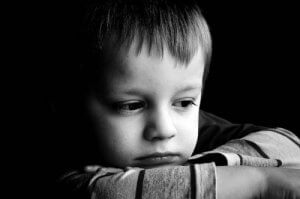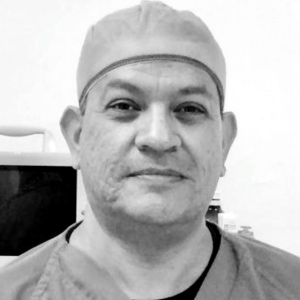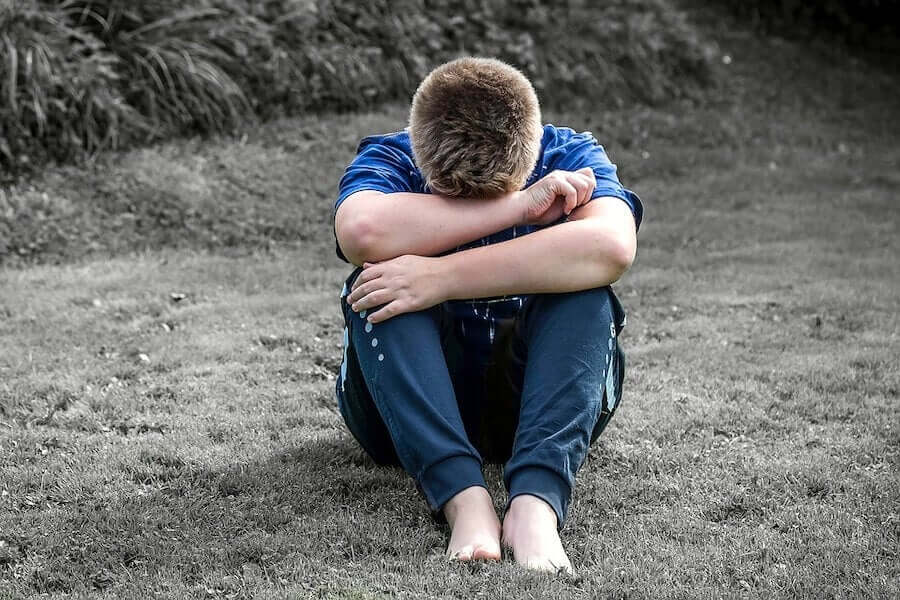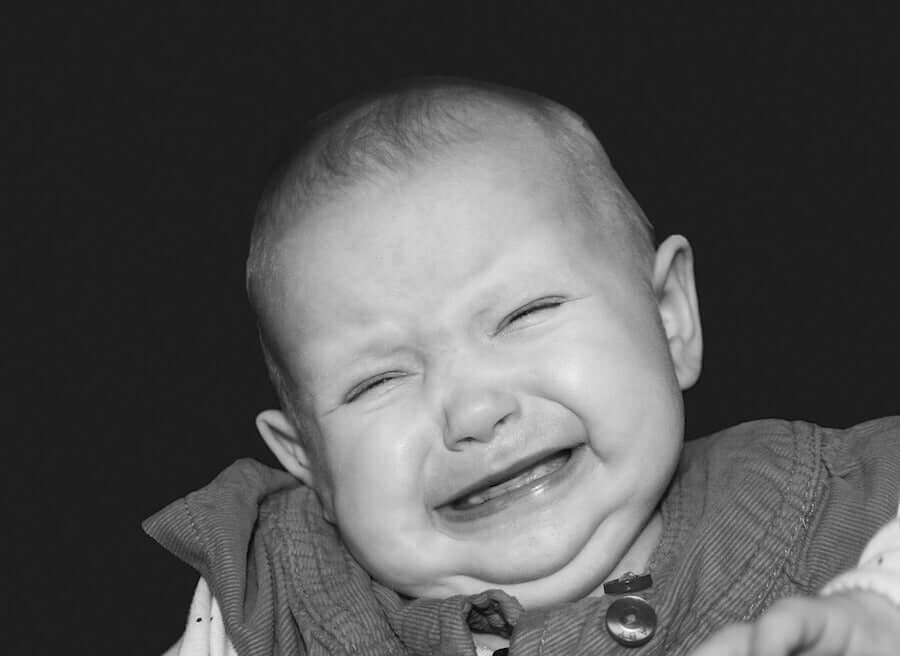What Is Shaken Baby Syndrome?


Reviewed and approved by the doctor Nelton Ramos
Shaken baby syndrome (SBS), also called abusive head trauma (AHT), is considered a clear case of child abuse. In this article, find out more about these situations that can end up being fatal for children. We’ll also show you how you can identify it in time in order to help them.
What does shaken baby syndrome refer to?
According to doctors, when a child has a subdural hematoma, cerebral edema and retinal hemorrhaging, then they’re dealing with a case of shaken child syndrome.
It’s caused by shaking a little child violently and dangerously when his or her brain still isn’t completely encased and protected inside the cranium, and is a crystal clear case of child abuse.
It’s a very serious injury in children up to five years of age caused by one or several impacts or violent shocks, perpetrated by an adult.

What do we know about it?
Shaken baby syndrome can often cause very serious brain damage. This can lead to permanent disability, partial loss of sight, blindness, cerebral palsy, or cognitive impairment (learning problems).
Symptoms and signs of shaken baby syndrome
In most cases, this syndrome appears in babies who are being nursed. These babies’ heads will be proportionally larger in relation to the rest of their bodies, and they’ll have weak muscles in the neck area. Since the child’s skull can’t cope with these movements, the jerks can be much more serious and dangerous.
When a young child comes to emergencies with one or more of the following symptoms, doctors often diagnose shaken baby syndrome:
- Retinal hemorrhage
- Multiple fractures in their long bones, vertebrae, or ribs
- Cerebral or subdural hematoma
- Soft tissue injuries
- Hypoxic disorders and respiratory distress
- Parenchymal bruises
- Cerebral edema
- Seizures
- Lethargy
- Vomiting
- Dilated pupils
One of the tests performed on the child is magnetic resonance imaging (MRI), in order to diagnose internal bleeding or “hidden” trauma in the brain. An ophthalmologist can also be involved and will analyze the eye injuries. Other studies used in these cases are CT scanning (computed tomography) and x-rays to determine if there are any bone fractures.
When does shaken baby syndrome occur?
This is difficult to determine, but the truth is that it’s common in homes where abuse is prevalent, and where an adult abuses some of his or her family members, either physically or verbally.
It also happens when adults regularly use drugs or alcohol and when there are emotional problems in the family. This includes aggressiveness or impulsivity. In a large number of cases, the doctors will find evidence of previous cranial lesions – albeit not as severe – that haven’t usually been treated.
Shaken baby syndrome happens when the child has been grabbed in the area of the thorax, and then shaken sharply side to side or forwards and backwards. The adults try to justify their actions by saying that the child “behaved badly” or that he or she “wouldn’t stop crying.”
Children vulnerable to suffering from this syndrome
Studies have confirmed that, apart from the actual shaking, some children are more vulnerable to these types of injuries than others. They’re more prone to it if they have:
- Vitamin C deficiency and scurvy: if they don’t consume fresh fruit and vegetables
- Hemophilia: problems with blood clotting
- Von Willebrand disease: a lack of a protein that’s vital for blood coagulation (this is an inherited condition)
- Meningitis: inflammation of the spinal cord membranes and outer layers of the brain
- Imperfect osteogenesis: fragile bones and frequent fractures
- Dysphagic choking
- Spontaneous bruising
- Recurrent bleeding from previous injuries
- Accidental falls

Treatment?
Shaken baby syndrome has different symptoms to those of a fall or an accidental impact. However, these can combine with the symptoms of a child who has suffered from domestic violence.
Finally, in terms of treatment, everything revolves around stabilizing your child’s state of health through the monitoring of intracranial pressure and drainage of blood that has accumulated in the bruising. Plaster casts can also be used for some bone fractures.
Tragically, one-third of babies who suffer from this condition end up dying. Another third survive but suffer from a serious neurological condition. And, finally, the last third are able to live their lives without any apparent consequences.
We hope that this article has raised awareness on the subject – and don’t hesitate to report any situations that you are concerned about.
Shaken baby syndrome (SBS), also called abusive head trauma (AHT), is considered a clear case of child abuse. In this article, find out more about these situations that can end up being fatal for children. We’ll also show you how you can identify it in time in order to help them.
What does shaken baby syndrome refer to?
According to doctors, when a child has a subdural hematoma, cerebral edema and retinal hemorrhaging, then they’re dealing with a case of shaken child syndrome.
It’s caused by shaking a little child violently and dangerously when his or her brain still isn’t completely encased and protected inside the cranium, and is a crystal clear case of child abuse.
It’s a very serious injury in children up to five years of age caused by one or several impacts or violent shocks, perpetrated by an adult.

What do we know about it?
Shaken baby syndrome can often cause very serious brain damage. This can lead to permanent disability, partial loss of sight, blindness, cerebral palsy, or cognitive impairment (learning problems).
Symptoms and signs of shaken baby syndrome
In most cases, this syndrome appears in babies who are being nursed. These babies’ heads will be proportionally larger in relation to the rest of their bodies, and they’ll have weak muscles in the neck area. Since the child’s skull can’t cope with these movements, the jerks can be much more serious and dangerous.
When a young child comes to emergencies with one or more of the following symptoms, doctors often diagnose shaken baby syndrome:
- Retinal hemorrhage
- Multiple fractures in their long bones, vertebrae, or ribs
- Cerebral or subdural hematoma
- Soft tissue injuries
- Hypoxic disorders and respiratory distress
- Parenchymal bruises
- Cerebral edema
- Seizures
- Lethargy
- Vomiting
- Dilated pupils
One of the tests performed on the child is magnetic resonance imaging (MRI), in order to diagnose internal bleeding or “hidden” trauma in the brain. An ophthalmologist can also be involved and will analyze the eye injuries. Other studies used in these cases are CT scanning (computed tomography) and x-rays to determine if there are any bone fractures.
When does shaken baby syndrome occur?
This is difficult to determine, but the truth is that it’s common in homes where abuse is prevalent, and where an adult abuses some of his or her family members, either physically or verbally.
It also happens when adults regularly use drugs or alcohol and when there are emotional problems in the family. This includes aggressiveness or impulsivity. In a large number of cases, the doctors will find evidence of previous cranial lesions – albeit not as severe – that haven’t usually been treated.
Shaken baby syndrome happens when the child has been grabbed in the area of the thorax, and then shaken sharply side to side or forwards and backwards. The adults try to justify their actions by saying that the child “behaved badly” or that he or she “wouldn’t stop crying.”
Children vulnerable to suffering from this syndrome
Studies have confirmed that, apart from the actual shaking, some children are more vulnerable to these types of injuries than others. They’re more prone to it if they have:
- Vitamin C deficiency and scurvy: if they don’t consume fresh fruit and vegetables
- Hemophilia: problems with blood clotting
- Von Willebrand disease: a lack of a protein that’s vital for blood coagulation (this is an inherited condition)
- Meningitis: inflammation of the spinal cord membranes and outer layers of the brain
- Imperfect osteogenesis: fragile bones and frequent fractures
- Dysphagic choking
- Spontaneous bruising
- Recurrent bleeding from previous injuries
- Accidental falls

Treatment?
Shaken baby syndrome has different symptoms to those of a fall or an accidental impact. However, these can combine with the symptoms of a child who has suffered from domestic violence.
Finally, in terms of treatment, everything revolves around stabilizing your child’s state of health through the monitoring of intracranial pressure and drainage of blood that has accumulated in the bruising. Plaster casts can also be used for some bone fractures.
Tragically, one-third of babies who suffer from this condition end up dying. Another third survive but suffer from a serious neurological condition. And, finally, the last third are able to live their lives without any apparent consequences.
We hope that this article has raised awareness on the subject – and don’t hesitate to report any situations that you are concerned about.
All cited sources were thoroughly reviewed by our team to ensure their quality, reliability, currency, and validity. The bibliography of this article was considered reliable and of academic or scientific accuracy.
- Lachica, E. (2010). Síndrome del niño maltratado : aspectos médico- legales. Cuadernos de Medicina Forense. https://doi.org/10.4321/S1135-76062010000100007
This text is provided for informational purposes only and does not replace consultation with a professional. If in doubt, consult your specialist.








